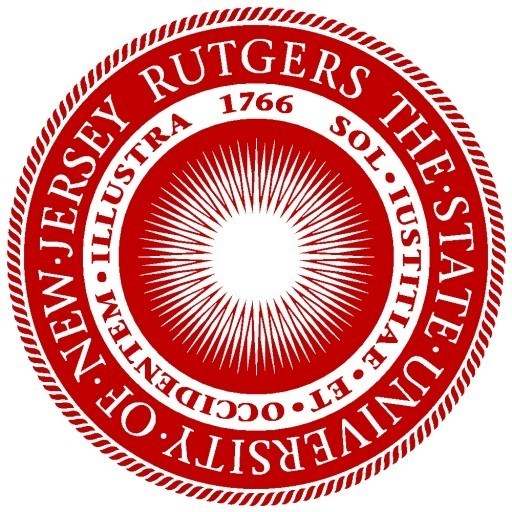Photos of university / #kansasstateuniversity
Environmental Design and Planning at Kansas State University offers a comprehensive and interdisciplinary approach to understanding, shaping, and managing the built and natural environments. This program prepares students to address complex environmental challenges through a blend of coursework in architecture, landscape architecture, urban planning, sustainability, and environmental science. Students gain the skills necessary to design sustainable communities, develop environmentally responsible urban landscapes, and plan for resilient infrastructure that meets societal needs while preserving natural resources. The curriculum emphasizes hands-on learning, critical thinking, and collaborative problem-solving, enabling graduates to work effectively in multidisciplinary teams and contribute innovative solutions to real-world environmental issues. Students have opportunities to engage in cutting-edge research, participate in community planning projects, and utilize state-of-the-art technologies such as Geographic Information Systems (GIS) and Building Information Modeling (BIM). The program aims to produce graduates who are not only proficient in technical knowledge but also equipped with a strong understanding of policy, social impacts, and ethical considerations in environmental design. With faculty expertise spanning architecture, urban planning, landscape architecture, and environmental sciences, students receive a well-rounded education that prepares them for careers in environmental planning, urban design, sustainable development, and related fields. Alumni of the program have gone on to work with government agencies, private consulting firms, non-profit organizations, and design studios, contributing to the creation of healthier, more sustainable, and aesthetically pleasing environments. The university's campus provides a dynamic setting for learning and research, fostering innovation and community engagement. Whether students aim to become licensed professionals or pursue advanced degrees, the Environmental Design and Planning program offers the knowledge, skills, and experiences necessary to make a meaningful impact on the environment and society.
The Bachelor of Science in Environmental Design and Planning at Kansas State University is a comprehensive program designed to equip students with the knowledge and skills necessary to create sustainable, functional, and aesthetically pleasing environments. The curriculum integrates principles from architecture, landscape architecture, urban planning, and environmental science to prepare graduates for careers in the design and planning sectors. Students will engage with coursework that covers sustainable design practices, land use planning, urban development, environmental systems, and architectural graphics. The program emphasizes hands-on experience through studio projects, design labs, and community-based initiatives, fostering creativity and practical problem-solving skills. Additionally, students have opportunities to learn about the social, economic, and ecological aspects of environmental design, ensuring they can develop solutions that are viable and sensitive to diverse community needs. The faculty comprises experienced professionals and scholars dedicated to mentoring students and advancing innovative research in environmental planning. Graduates of this program are prepared for diverse career paths including urban planner, sustainable design consultant, landscape architect, and environmental policy analyst. The program also offers pathways for graduate study and professional certification. State-of-the-art facilities and a collaborative learning environment support student success and encourage exploration in this vital and dynamic field. Through rigorous academics and experiential learning, the Environmental Design and Planning program at Kansas State University aims to cultivate leaders committed to creating resilient, sustainable, and beautifully designed environments for future generations.
Program Requirements: Environmental Design and Planning at Kansas State University
Prospective students interested in the Environmental Design and Planning program at Kansas State University must meet specific admission criteria. Applicants are typically required to hold a high school diploma or an equivalent credential. A competitive high school GPA, generally above a 2.75 on a 4.0 scale, is recommended, along with strong performance in coursework related to mathematics, science, and art. Standardized test scores such as the SAT or ACT are considered, with preferred scores being above the 50th percentile, though standardized testing requirements may vary yearly. International applicants must provide proof of English language proficiency through TOEFL or IELTS scores, with minimum scores of 79 on the TOEFL iBT or 6.5 on the IELTS.
Once admitted, students are required to complete a curriculum comprising foundational courses in environmental design principles, urban planning, landscape architecture, and sustainable development. The program emphasizes both theoretical knowledge and practical skills, including coursework in environmental systems, human ecology, spatial analysis, and planning methods. Students are expected to undertake design studios, often involving real-world projects, fostering hands-on experience in environmental planning and design processes. Additionally, the program may require completion of a capstone project or thesis demonstrating comprehensive understanding and innovative solutions in environmental planning.
Internships or cooperative education (co-op) experiences are highly encouraged to provide industry exposure and professional development opportunities. Students should also participate in seminars, workshops, and community engagement activities as part of their academic journey. To graduate, students typically must complete a minimum of 120 credit hours, including general education, major coursework, and electives, within the standard timeframe. Maintaining satisfactory academic progress and adhering to university policies is mandatory throughout the program.
Furthermore, students are encouraged to engage with faculty research initiatives, attend conferences, and join relevant student organizations to enhance their learning and professional network. Upon successful completion of all program requirements, graduates are awarded a Bachelor of Science in Environmental Design and Planning, qualifying them for entry-level positions in urban planning, environmental consulting, landscape architecture, or pursuing advanced degrees in related fields.
Funding options for the Environmental Design and Planning program at Kansas State University include a variety of financial aid opportunities designed to support students throughout their academic journey. Prospective and current students can explore federal and state financial aid programs, such as the Free Application for Federal Student Aid (FAFSA), which provides access to grants, loans, and work-study programs. Kansas State University offers institutional scholarships based on merit, need, or specific criteria related to the field of environmental design and planning. Applicants are encouraged to review the university’s scholarship portal and contact the financial aid office for detailed information and application procedures. Graduate students may also be eligible for assistantships, which provide a stipend and tuition benefits in exchange for work within faculty research projects or departmental duties. Additionally, external funding sources, including private foundations, professional organizations, and industry partners, offer fellowships and grants dedicated to environmental professionals. Some students may consider loans or payment plans available through the university, which can help manage the cost of education over time. It is recommended to begin financial planning early by completing the FAFSA annually and researching all available options to identify the most suitable funding strategies. The university’s financial services office provides personalized guidance to help students understand their financial responsibilities and options. Overall, financing a degree in environmental design and planning requires careful planning and utilization of multiple resources to minimize debt and maximize educational investment.
The Bachelor of Science in Environmental Design and Planning at Kansas State University is a comprehensive program designed to prepare students for careers in sustainable development, urban and regional planning, landscape architecture, and environmental management. The curriculum integrates foundational courses in environmental science, design theory, and planning practices with advanced studies in landscape architecture, urban planning, and environmental policy. Students gain hands-on experience through design studios, fieldwork, and internships, allowing them to develop practical skills and a deep understanding of how to create environmentally responsible and socially equitable communities.
The program emphasizes a multidisciplinary approach, encouraging collaboration among students from architecture, landscape architecture, civil engineering, and environmental sciences. Core courses include environmental systems analysis, spatial planning, community development, and environmental law. Students are also required to complete a capstone project that synthesizes their learning and demonstrates their ability to address complex environmental and planning challenges. The faculty are experts in their fields, often involved in research and consulting that influences planning practices at local, state, and national levels.
Graduates of the program are well-equipped for careers in government agencies, private consulting firms, non-profit organizations, and design firms. They may work as urban and regional planners, landscape architects, environmental consultants, or sustainability coordinators. The program also provides a solid foundation for advanced studies in graduate or professional programs related to environmental planning, architecture, or urban design.
Kansas State University supports student success through state-of-the-art facilities, dedicated faculty, and a vibrant campus community focused on sustainability and innovation. The university’s commitment to experiential learning ensures that students graduate with a portfolio of projects and real-world experience that enhances their employability. Overall, the Environmental Design and Planning program aims to cultivate environmentally conscious professionals capable of shaping sustainable, livable communities for the future.



